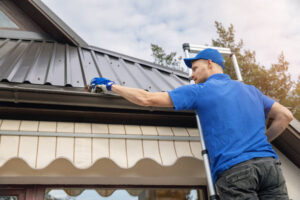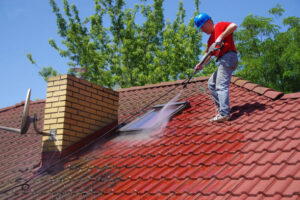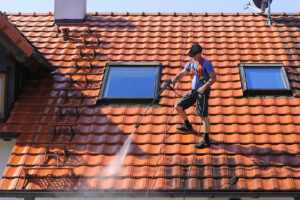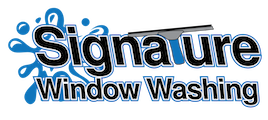Softwash roof cleaning is an essential part of keeping your home in tip-top condition. While regular maintenance may seem like a tedious chore, it’s important to ensure that your roof is properly cared for and maintained to avoid costly repairs in the future. This article will explain what softwash roof cleaning is and why it’s so important.
What Is Softwash Roof Cleaning?

Softwash roof cleaning is a specialized type of house cleaning that involves using low-pressure washing techniques to remove dirt, debris, and other unwanted materials from roofs. This method of cleaning is often preferred over traditional pressure washing because it uses less water and does not require the use of harsh chemicals or detergents, which can damage a roof’s surface. Softwash roof cleaning also offers a more thorough clean as it removes dirt and debris from all parts of the roof, including gutters, valleys, and other hard-to-reach areas.
The process involves spraying a specially formulated solution onto the roof with a low-pressure sprayer. The solution contains special surfactants that break down dirt and grime on contact so they can be easily washed away without damaging the roof’s surface. Afterward, the solution is rinsed off with a soft wash machine which uses less water than traditional pressure washers. In addition to providing a thorough clean, softwash roof cleaning helps protect your roof by removing dirt and debris that could potentially cause permanent damage if left unchecked.
Softwash roof cleaning is an effective way to keep your home’s exterior looking its best while protecting its longevity. By utilizing this specialized form of house cleaning you can ensure that your home’s exterior remains in good condition for years to come without having to use harsher methods such as high-pressure washing or laundry detergents.
The Benefits Of Softwashing A Roof
Softwashing a roof is a popular cleaning service that offers many benefits to homeowners. Unlike pressure washing, softwash roof cleaning uses specialized washing machines to deliver a gentle stream of water and cleaning agents onto the roof surface. This method is much gentler than pressure washing, making it ideal for roofs made of delicate materials like asphalt shingles or metal tiles. Softwashing also helps prevent water damage and can extend the life of your roof.
The advantages of softwashing over power washing are numerous. First, softwashing offers an effective way to remove dirt, moss, algae and other contaminants from the roof without damaging it in the process. Softwashing also doesn’t leave behind any visible residue, making it an attractive option if you’re looking for a clean look on your roof. Finally, softwashing significantly reduces the amount of time needed to clean a roof compared to pressure washing.
Softwash roof cleaning is a great choice for homeowners who want an efficient and effective way to keep their home’s exterior looking its best. Not only does it help protect your roof from damage but it can also save you time and money in the long run by helping extend the life of your home’s exterior surfaces.
What Is Involved In A Softwash Roof Cleaning?
Softwash roof cleaning is an effective and safe way to remove dirt, grime, mold, and mildew from your roof. It’s a process that involves using low-pressure water, biodegradable cleaning agents and other specialized tools to gently clean the roof without damaging it. The benefits of this method include improved curb appeal, longer life span for your roof, and protection from environmental elements such as hail, wind, snow and rain.
The softwash method begins with a pre-cleaning assessment to determine the best approach for the job. This step ensures that the right tools are used in order to achieve maximum results. Afterward, the softwashing process begins by spraying the roof with a specialized detergent solution that kills organic matter like mildew and algae. This is followed by a rinsing process that removes any remaining debris and leaves the roof looking clean and new again.
Finally, after the softwashing has been completed, a special sealant or protectant can be applied to help preserve the beauty of your roof for years to come. Not only does this protect against future damage from inclement weather or sun exposure but it also helps maintain its overall appearance so you can enjoy it for longer periods of time.
No matter what type of material your roof is made from or how much dirt or grime may have built up over time, softwash cleaning provides an efficient and cost-effective solution for restoring it back to its original condition. With proper maintenance and care following each cleaning session, you can keep your home looking its best while also protecting it from further damage caused by harsh weather conditions or other environmental factors.
Why Employ Professional Softwashing For Roof Cleaning?

Softwashing is a safe and effective method for cleaning roofs. It involves using low-pressure cleaning solutions to remove dirt, algae, moss, and other debris that can accumulate on the surface of asphalt shingles. This process has been proven to be more effective in removing these unwanted elements than pressure washing or other methods.
When it comes to roof cleaning, it’s important to employ professionals who are trained and experienced in this specialized field in order to ensure the job is done correctly. Professional softwashing services use only the highest quality equipment and eco-friendly cleaning solutions that will not damage your roof or surrounding plants. They also take extra care when applying the cleaning solution to ensure that any debris is completely removed without causing any further damage.
By hiring professional softwashing services you can rest assured that your roof will be properly cleaned and maintained. With the right tools and expertise, your roof will look like new again and last longer. You’ll save money in the long-run due to fewer repairs needed, while also protecting your home from potential health hazards caused by mold or mildew growth on the roof surface.
The Different Types Of Softwashing Solutions Used For Roof Cleaning
Softwashing is an effective and safe method of cleaning roofs, with a range of solutions available to suit different needs. It uses low-pressure water with special detergents that work together to remove dirt, algae and other organic matter from the surface. This has many advantages over high-pressure washing methods, which can damage surfaces and leave them vulnerable to further damage from the elements.
The most common type of softwash solution used for roof cleaning is a combination of bleach and detergent. This combination is able to break down organic matter without damaging the surface. The solution also works quickly, so minimal time is needed for it to take effect. For more stubborn stains, a stronger solution may be necessary; this could include an additional chemical such as trisodium phosphate or hydrogen peroxide.
Finally, another type of softwashing solution involves applying a foam directly onto the surface before rinsing off with low-pressure water. This foam acts as a protective layer against dirt and algae buildup while still allowing moisture to pass through. By using professional softwashing services, you can ensure that your roof receives optimal protection against dirt build-up and future weather damage.
The Equipment Needed For Softwashing A Roof
Softwashing a roof is a great way to restore a roof’s condition, and the right equipment makes all the difference. Pressure washers, ladders, and specially designed softwashing solutions are all needed for this job. Let’s take a closer look at these components.
Pressure washers are the main piece of equipment used for softwashing roofs. They come in various sizes and pressures to suit different roof types. Ladders are also essential for reaching higher parts of the roof safely. Softwashing solutions are specially formulated cleaning agents that break down dirt, grime, algae, moss and other debris from surfaces without causing any damage.
These elements combine to create an effective softwash system that can restore a roof’s condition quickly and easily. With the right pressure washer, ladder, and softwashing solution, you can ensure your roof looks like new again in no time.
How Is Softwashing Different From Pressure Washing A Roof?
Softwashing a roof is an increasingly popular alternative to pressure washing. But what makes this method different? In order to understand the differences between softwashing and pressure washing a roof, it’s important to look at the details of each process.
Softwashing utilizes low pressure and specialized cleaning solutions that are applied with a sprayer or wand. This combination allows for a deep clean without the risk of damaging the surface of your roof or other materials such as shingles, tiles, and siding. Additionally, softwashing can be used in areas where high-pressure water could cause damage.
On the other hand, pressure washing requires higher water pressure which can cause more harm than good when used on roofs and other delicate surfaces. It is not recommended for removing moss, mold and mildew as it can often just break up and spread the contaminants instead of removing them completely. Furthermore, using high-pressure water on asphalt shingles can lift up granules which accelerates their deterioration over time.
In comparison to pressure washing, softwashing provides a more thorough clean without causing any damage to your roof or surroundings. It’s an effective way to remove built-up dirt, grime, mold, Mildew and algae from all types of surfaces safely and effectively.
The Advantages Of Softwashing A Roof
Softwashing a roof offers many advantages over traditional pressure washing. Firstly, softwashing is more gentle and does not cause damage to the roof’s surface like pressure washing can. It uses low-pressure water mixed with special cleaning agents that break down dirt, mold, mildew, and algae on the roof without causing any damage to the material. This makes softwashing a much safer option than pressure washing which could end up causing damage or even voiding your warranty on the roofing material.
Another advantage of softwashing is that it can clean a wider variety of materials than pressure washing – including asphalt shingles, metal roofs, clay tiles, and wooden shakes – without damaging them. The cleaning agents used in softwashing are also non-toxic so they don’t harm plants or animals in the area. Plus, these agents can penetrate deeper into the material for a more complete clean that will last longer.
Softwashing also saves time and money as it’s usually done from ground level so there’s no need for ladders or scaffolding which cuts down on labor costs. Plus, because of its gentler nature, it takes less time to get the job done right – meaning you can get back to enjoying your newly cleaned roof sooner!
The Cost Of Softwashing A Roof

Softwashing a roof is an effective way to clean and maintain it, but cost can be an important factor for homeowners considering this option. The cost of softwashing a roof depends on several factors, including the size of the roof, the complexity of the job, and the location.
The size of the roof is one of the most important factors when calculating the cost of softwashing services. Larger roofs will require more time and materials to clean than smaller roofs, resulting in higher costs. In addition, if there are any difficult-to-reach areas or complex designs on the roof, these may also add to the overall cost of softwashing.
Finally, geographical location can have a major impact on how much a homeowner pays for softwashing services. Roof cleaners may charge extra for travel expenses or if they have to bring additional equipment or personnel to complete a job located far from their base. Therefore, it’s important for homeowners to take into account all these variables when estimating the cost of softwashing their roof.
In order to get an accurate estimate of what their softwashing project will cost, homeowners should contact several local contractors and compare prices before making a decision.
Safety Measures For Softwashing A Roof
When it comes to the safety measures for softwashing a roof, there are some important considerations that must be taken. For starters, it’s essential to protect yourself with safety gear like protective eyewear and gloves while working on the roof. It’s also important to train staff members on how to use all of the necessary equipment safely and correctly. Additionally, you’ll want to inspect the roof thoroughly before beginning any softwashing process and make sure that it is structurally sound.
Before beginning any softwashing project, you’ll need to purchase or rent the appropriate equipment for your particular job. This includes a pressure washer, ladder, extension cords, and cleaning solutions. You should also purchase or rent protective clothing such as long pants and long-sleeved shirts as well as safety goggles and gloves.
It’s also important to ensure that you are using the correct cleaning solutions for your particular roof type. Softwash solutions are designed specifically for certain types of roofs so it’s essential to use the right one in order to avoid damaging your roof or causing hazardous conditions around your property. Taking these safety precautions when softwashing a roof will ensure that you get the best results while keeping yourself safe in the process.
The Risks Involved In Softwashing A Roof
Softwashing a roof can be an effective way to clean and restore a roof, but it has its risks. It is important to understand the risks involved before starting any softwash project.
First, there is the risk of damaging the roof itself if not done correctly. This is especially true with older roofs or roofs that are in poor condition. The chemicals used in softwashing are strong and can cause damage if applied incorrectly or in too great a concentration. Additionally, using too much water or applying water pressure that is too high can also cause damage to the roof.
Another potential risk is personal injury from slipping on wet surfaces or working at heights on a ladder. It is important to take all necessary safety precautions when working on a roof – such as wearing appropriate non-slip shoes, using safety harnesses, and having someone spot you while you work – to reduce the chances of an accident occurring.
It is also essential to ensure that all equipment being used for softwashing is up-to-date and compliant with local regulations. Failing to do so could lead to fines or other legal issues for the person performing the softwashing work.
Softwashing a roof can be an effective cleaning solution but it should not be undertaken lightly; it’s important to understand the risks before starting any project. Taking proper safety measures and ensuring all equipment meets health and safety standards will help reduce those risks and make sure that any softwash job goes off without a hitch.
Tips For Choosing A Professional Softwashing Service
When it comes to softwashing your roof, choosing a professional service is essential to ensure the job is done right and safely. But with so many options out there, how can you make sure you pick the best one? Here are some tips to help guide you.
First, check reviews and ask for references. A reputable company will have no problem providing these. It’s also worth seeing if they are licensed and insured. This will give you peace of mind that any accidents or damages during the job will be covered by the provider.
Next, get quotes from several companies and compare them against each other in terms of price and services offered. Don’t be afraid to ask questions about their techniques and the products they use – this will give you an idea of what kind of results you can expect from them.
Finally, don’t forget to read through the contract carefully before signing it. Make sure all aspects of the job, such as timescales, costings and aftercare advice, are detailed in writing so there are no surprises down the line. Taking these steps should ensure that your roof is professionally softwashed without any issues along the way.
The Aftercare When Softwashing A Roof
When it comes to softwashing a roof, the aftercare is just as important as the initial wash. Softwashing is a delicate process that requires special care and attention in order to ensure the best results. Following the right aftercare steps will help maintain the cleanliness of your roof for longer.
The first step in aftercare is to inspect the softwashed area for any damage that may have occurred during the process. If any damage has been done, it should be repaired promptly. Additionally, it’s important to check that all of the cleaning agents and solutions have been properly removed from the surface of your roof. Any leftover residue can cause discoloration or staining if not taken care of properly.
Finally, you should reapply sealants or protective coatings to your roof to protect it from further weather damage. This will help keep your roof looking good for longer and prevent future dirt, stains, and moss growth from occurring on your roof’s surface. By taking these steps post-softwash, you can rest assured that your roof will remain clean and protected for many years to come.
Common Questions And Answers About Softwashing A Roof
Softwashing a roof is an effective and safe way to clean many kinds of roofs, but it can raise some questions. Common questions about softwashing a roof include: What is softwash roof cleaning? How does it differ from pressure washing? What are the benefits of using this method? In this article, we’ll answer these questions and more.
Softwash roof cleaning is a process that uses special low-pressure equipment and detergents to treat the surfaces of your roof. The detergents used in softwashing break down dirt, mold, algae, moss, lichen, and other organic materials without damaging the underlying materials or causing any harm to nearby vegetation. Softwashing also reduces the risk of damage from high-pressure washers which can be too powerful for certain types of roofs.
In comparison to pressure washing, softwashing takes longer because it relies on the action of chemicals rather than brute force to remove unwanted material from your roof. However, it’s a much safer option for delicate surfaces like asphalt shingles or slate roofs since the low pressure prevents them from being damaged. Additionally, the use of chemicals ensures that even tough stains are removed without leaving residue behind.
Softwashing a roof offers several advantages over other methods of cleaning roofs including reduced risk of damage and improved longevity due to its thoroughness in removing organic matter. It’s also safe for surrounding plants and landscaping since no harsh chemicals are used as part of the process. Plus, because it relies on specialty detergents rather than abrasive scrubbing or excessive water pressure, softwashing helps preserve the aesthetic appeal of your home’s exterior while maintaining its structural integrity.
The Long-Term Benefits Of Softwashing A Roof
Softwashing a roof is an effective way of cleaning and maintaining the roofing material without causing any damage. It’s a low-pressure chemical treatment that removes stains, dirt and grime from the surface of the roof. The long-term benefits are numerous, and can make a big difference in how well your roof lasts over the years.
Firstly, softwashing eliminates algae, moss and lichen from the surface of your roof. These organisms can cause significant damage if left untreated for long periods of time. By softwashing your roof, you get rid of these organisms before they have a chance to do serious harm. This helps to protect the integrity of your shingles or other materials used on your roof, extending its life significantly.
It also improves the aesthetic appeal of your home’s exterior. The combination of dirt, grime and unsightly algae can make any home look much older than it actually is. Softwashing will get rid of these blemishes and restore the original beauty of your home’s exterior, making it look like new again. Plus, since it doesn’t require any harsh scrubbing or scraping, you won’t have to worry about causing any additional damage in the process.
Finally, softwash treatments are much more affordable than traditional cleaning methods such as power washing or sandblasting. Not only does this save you money up front but it also means that you don’t need to clean your entire roof every year; instead you just need to spot treat areas where there is significant buildup or staining. This makes softwashing a great choice for anyone looking to maintain their roofs without breaking the bank!
Conclusion

Softwashing a roof is an effective and cost-efficient way to maintain the appearance of your roof. With a professional softwashing service, you can be sure that your roof will look great for years to come. Softwashing solutions are designed to penetrate deep into the surface of the shingles and remove dirt, algae, and other contaminants without damaging the underlying material. As well as providing aesthetic benefits, regular softwash roof cleaning can also help preserve the lifespan of your roof by removing harmful elements that could cause damage over time. It’s important to select a professional softwashing service with experience in dealing with roofs so you can get the most out of your softwash cleaning session. With proper maintenance and care following a softwash, you should have no problem enjoying a clean and beautiful roof for many years to come.

Recent Comments